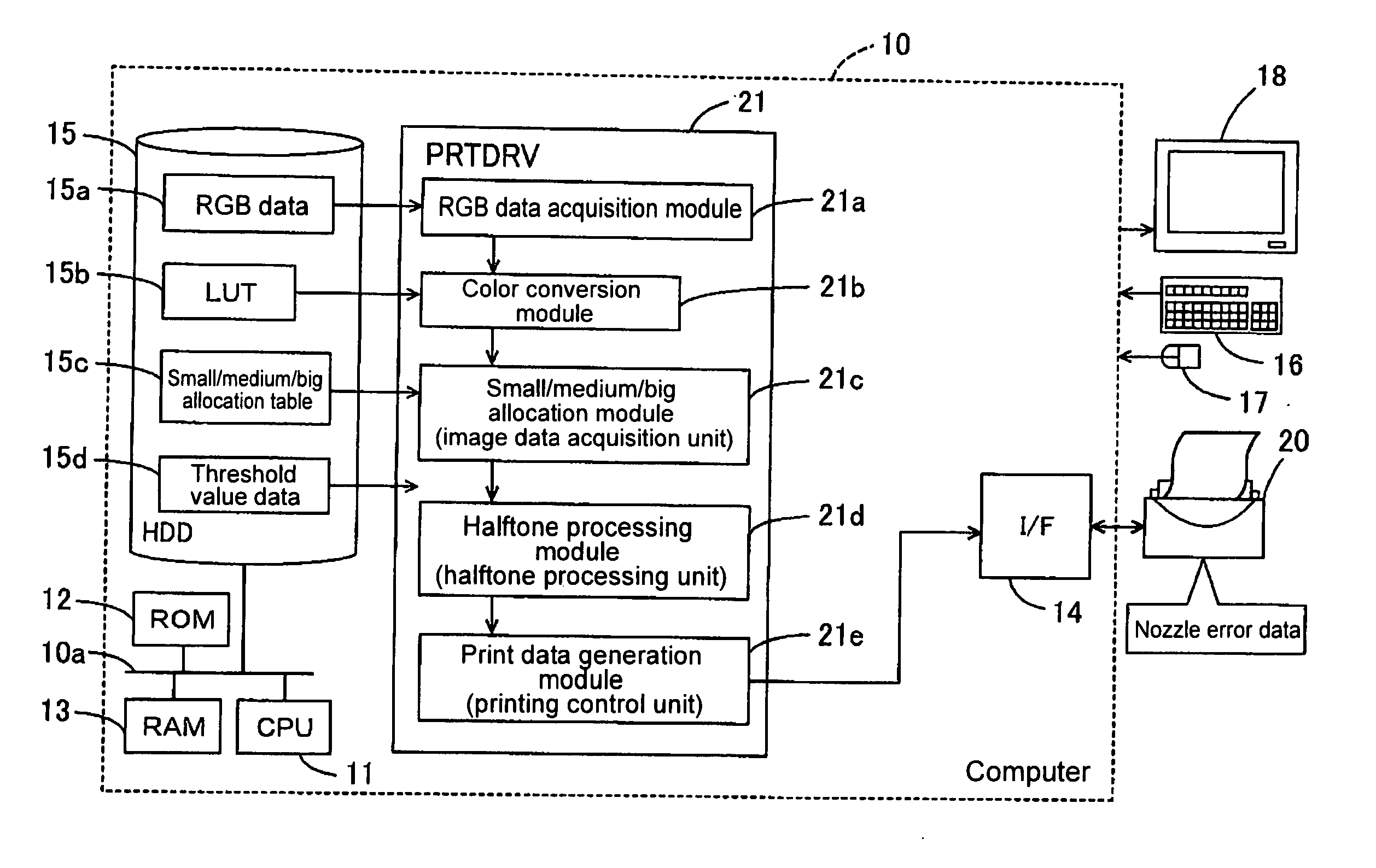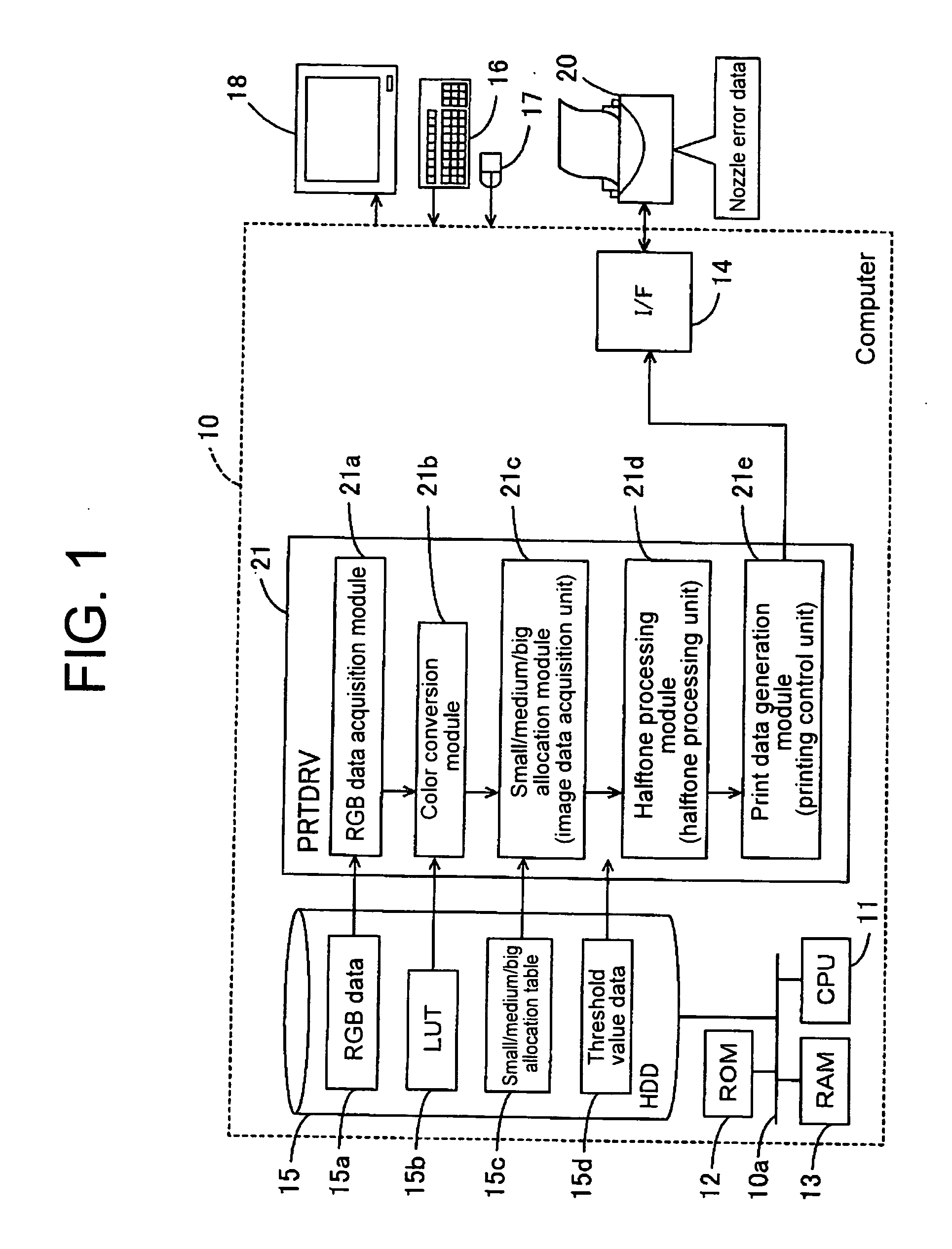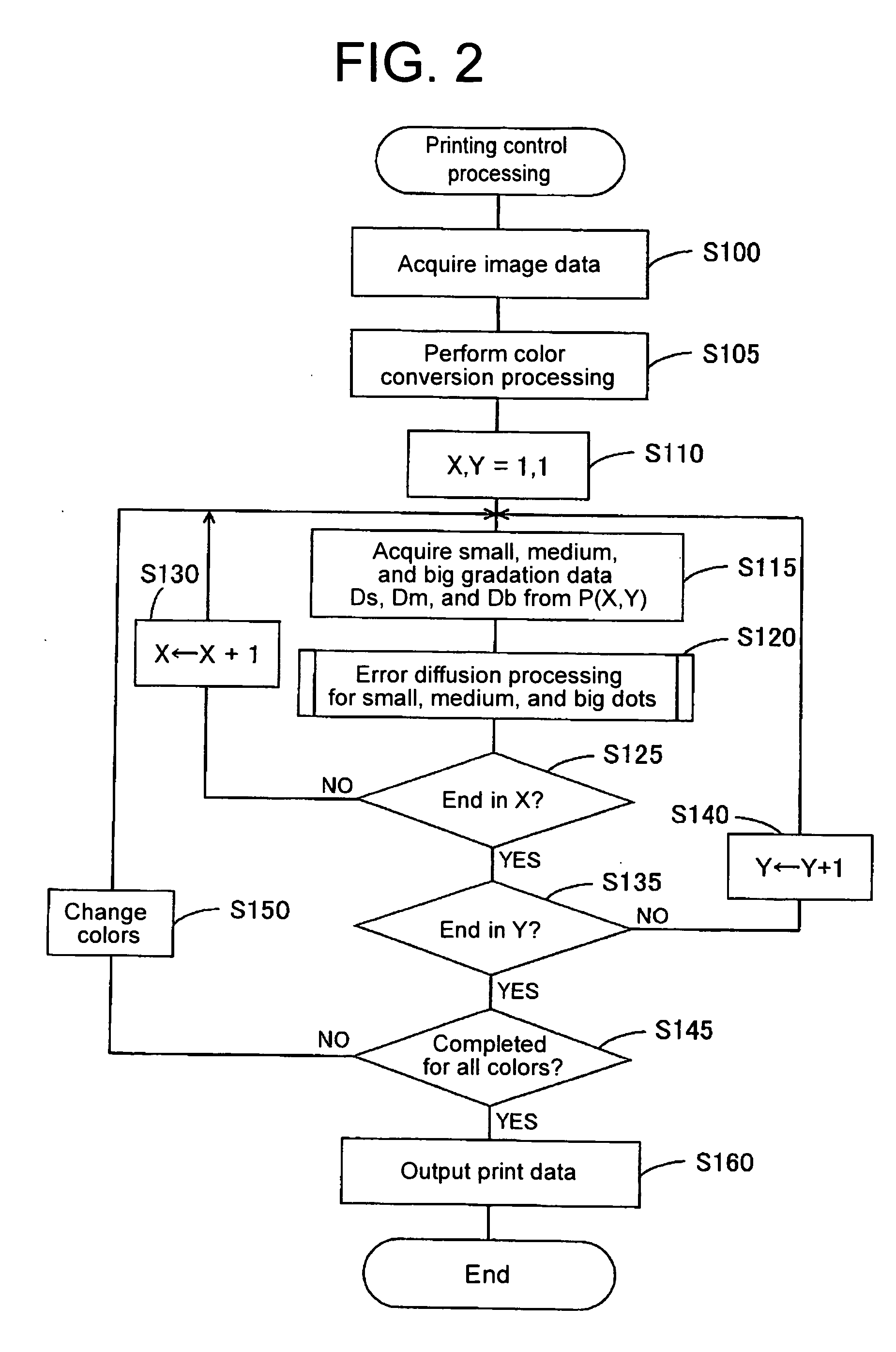Printing control device, printing control method, and media with printing control program recorded thereon
a printing control and control program technology, applied in printing and other directions, can solve the problems of not being able to control the graininess of the entire small, medium, and big dots, and achieve the effect of improving the graininess of the entire dots
- Summary
- Abstract
- Description
- Claims
- Application Information
AI Technical Summary
Benefits of technology
Problems solved by technology
Method used
Image
Examples
Embodiment Construction
[0049] Description will be given to embodiments of the invention in the order listed below:
(1) Configuration of Printing Control Device:
(2) Printing Control Processing:
[0050] (2-1) Error Diffusion Processing for Small, Medium, and Big Dots:
(3) Other Embodiments:
[0051] (1) Configuration of Printing Control Device:
[0052]FIG. 1 illustrates the general configuration of a printing control device in an embodiment of the invention. In this embodiment, a printing control device is implemented by part of the functions of a computer 10. The computer 10 has CPU 11 that serves as the nerve center of computation. The CPU 11 controls the entire computer 10 through a system bus 10a. The system bus 10a is connected with ROM 12, RAM 13, an interface (I / F) 14 and a hard disk drive (HDD) 15, a CRT I / F and an input device I / F that are not shown in the figure, and the like.
[0053] In the hard disk drive 15, there are stored programs, such as operating system (OS), as software. Such programs as ...
PUM
 Login to View More
Login to View More Abstract
Description
Claims
Application Information
 Login to View More
Login to View More - R&D
- Intellectual Property
- Life Sciences
- Materials
- Tech Scout
- Unparalleled Data Quality
- Higher Quality Content
- 60% Fewer Hallucinations
Browse by: Latest US Patents, China's latest patents, Technical Efficacy Thesaurus, Application Domain, Technology Topic, Popular Technical Reports.
© 2025 PatSnap. All rights reserved.Legal|Privacy policy|Modern Slavery Act Transparency Statement|Sitemap|About US| Contact US: help@patsnap.com



